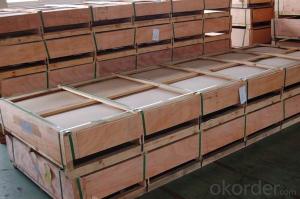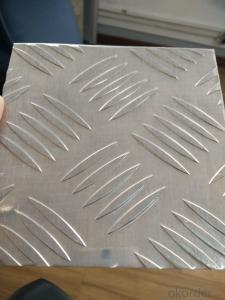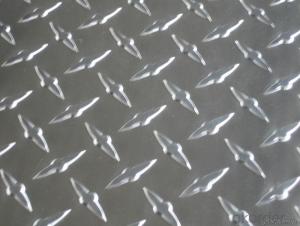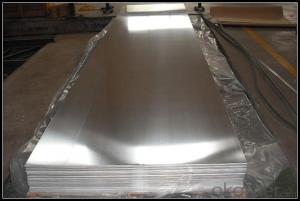Black Diamond Plate Aluminum Sheets for Window Curtain and Blinds
- Loading Port:
- Shanghai
- Payment Terms:
- TT OR LC
- Min Order Qty:
- 2.5
- Supply Capability:
- 5000 m.t./month
OKorder Service Pledge
OKorder Financial Service
You Might Also Like
Specification
Mill Finish Aluminum Strip for Electrical Transformer Winding
l Product Introduction
The Aluminum Strip is mainly used for refrigerator, cable, capacitor shell material, steal-protection cover, cable sheathing, composite pipe and tube, water pipe etc. It has the property of deep drawing, high thickness accuracy, and low earring rate, etc.
l Product Details
1.Application:Window curtain, blinds etc.
2.Alloy and temper
A3004/5052/3005/H19
3.Specification:
Gauge:0.13-0.25mm
Width:15-1350mm
4.Tolerance
Gauge | Gauge tolerance | Width | Width tolerance |
0.13-0.18 | +/-0.003 | ≤50 | +/-0.05 |
0.18-0.25 | +/-0.005 | > 50 | +/-0.10 |
5.PHYSICAL PROPERTIES
Alloy | Temper | Thickness | Mpa | Elogation(%) |
5052 | H19 | 0.13-0.18 | ≥290 | ≥1 |
5052 | H19 | 0.18-0.25 | ≥285 | ≥1 |
3004 | H19 | 0.13-0.18 | ≥285 | ≥1 |
3004 | H19 | 0.18-0.25 | ≥290 | ≥2 |
l Packaging & Delivery
Packaging detail: Covering with brown paper and plastic bag then packed with wooden plywood then directly loading into container for transshipment. For the thickness which is more than 1.50mm, one paper interleave into two sheets.
Delivery detail: within 30days
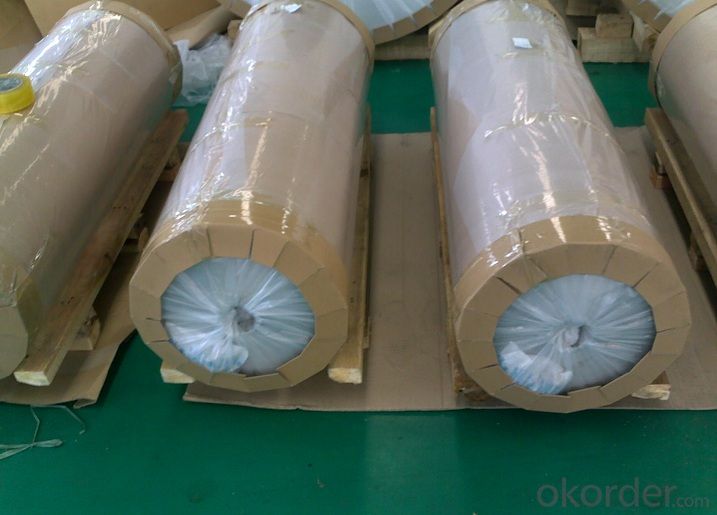
l Company Profile
CNBM International Corporation, China National Building Materials (Group) Corporation, is one of the largest companies in China building material & equipment industry, with 42,800 employees and sales in 2005 of US Dollar 4.395 billion. In 2006, China National Building Material Company Limited was listed on Hong Kong Stock Market with the stock code as 3323.
Aluminium Strip has always been one of the most popular products in CNBM. With advanced technic skills and equipment, CNBM has produced high quality aluminium strips that meet international standard.
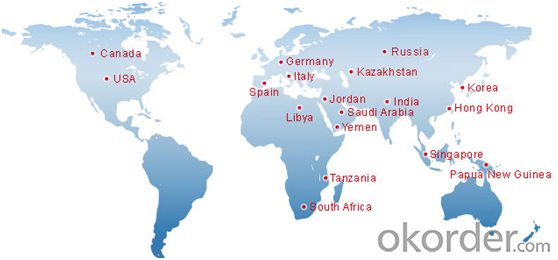
l Product Images



l Certificates

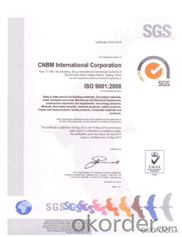

l FAQ
Q: Do you provide free samples?
A: Yes, free samples will be sent to you on freight at destination.
Q: Can I get your latest products catalogue?
A: Yes, it will be sent to you in no time.
Q: What is the MOQ?
A: 2.5 tons
Q: What are your payment terms?
A: We accept L/C, T/T.
- Q: What unique considerations or prerequisites are necessary when installing aluminum sheets?
- <p>When installing aluminum sheets, there are several special requirements to consider. First, ensure that the surface is clean, dry, and free of any debris to guarantee proper adhesion. Use appropriate fasteners designed for aluminum to prevent corrosion. Measure and cut the sheets accurately to fit the intended area, as aluminum can be prone to warping if not handled correctly. Additionally, consider the environmental conditions, such as temperature and humidity, which can affect the installation process. Always follow the manufacturer's guidelines for installation and safety precautions.</p>
- Q: Are aluminum sheets suitable for construction in regions with a high risk of earthquakes?
- <p>Aluminum sheets can be used in earthquake-prone areas, but their suitability depends on the specific application and construction methods. Aluminum is lightweight and flexible, which can be advantageous in withstanding seismic forces. However, it lacks the strength and rigidity of traditional materials like steel and concrete. When used in construction, aluminum must be properly engineered and combined with other materials to ensure structural integrity and compliance with seismic building codes. It's crucial to consult with structural engineers and follow local regulations when considering aluminum for earthquake-prone regions.</p>
- Q: What are the different forming methods for aluminum sheets?
- Aluminum sheets can be shaped using various forming methods. These methods encompass: 1. Roll Forming: By passing the aluminum sheets through a series of rollers, they gradually take on the desired form. Roll forming is commonly employed to produce elongated shapes like channels or rails. 2. Press Forming: This technique involves utilizing hydraulic or mechanical presses to exert force on the aluminum sheet, resulting in the desired shape. Press forming is often favored for creating intricate shapes with precise tolerances. 3. Stretch Forming: The aluminum sheet is clamped at its edges and then stretched over a die, causing it to conform to the die's shape. Stretch forming is frequently utilized to manufacture curved or contoured parts. 4. Deep Drawing: This method entails inserting an aluminum sheet blank into a die and using a punch to force the material into the die cavity, creating a hollow shape. Deep drawing is commonly employed for producing cylindrical or box-shaped parts. 5. Hydroforming: Hydraulic pressure is employed to shape the aluminum sheet against a die. Hydroforming is particularly advantageous for crafting complex shapes with smooth surfaces. 6. Incremental Sheet Forming: This technique involves a CNC machine moving a small tool over the aluminum sheet's surface, gradually shaping it by applying localized pressure. Incremental sheet forming is often employed for prototyping or small-scale production. These forming methods offer distinct advantages and are suitable for different applications. The choice of method depends on factors such as the desired shape, complexity, and production volume.
- Q: What are the different types of edges available for aluminum sheets?
- Aluminum sheets offer a variety of edge options to suit different applications and desired appearances. Firstly, there is the straightforward straight edge option. This involves cutting the aluminum sheet in a straight line without any additional alterations or shaping. Another choice is the beveled edge, accomplished by cutting the aluminum sheet at an angle, typically 45 degrees. This creates a chamfered or sloping edge, often used for decorative purposes or to minimize sharpness. For a smooth and rounded edge, the rolled edge is a popular option. By bending the edge of the aluminum sheet, a rounded finish is achieved. This is commonly chosen for safety reasons, as it eliminates sharp edges. A hemmed edge involves folding the aluminum sheet's edge back onto itself, resulting in a double layer of material. This offers increased strength and durability, making it suitable for applications where the edge will be exposed or subject to wear and tear. In industries like aerospace and automotive, the tapered edge is frequently utilized. This involves gradually reducing the thickness of the aluminum sheet towards the edge, reducing weight while maintaining strength. Lastly, there is the flanged edge, created by bending the aluminum sheet's edge at a right angle to form a lip or flange. This type of edge is commonly employed when the aluminum sheet needs to be attached or joined with other materials. Ultimately, the choice of edge type depends on specific project requirements, encompassing functionality, aesthetics, and safety considerations.
- Q: What is the typical hardness of aluminum sheets?
- The typical hardness of aluminum sheets can vary depending on the specific alloy and tempering process used, but it generally falls within the range of 40-70 on the Rockwell B scale.
- Q: Does aluminum foil keep food warm or cool, or is it just a convenient material to cover food with?
- It can insulate food, depending on how thick it is or how many layers you use. Aluminum foil is multi-functional: 1) Acts as a lid if you don't have one for any pot or pan. 2) As you mentioned: its a convenient material to cover food. 3) Can be used for lining the drip tray on your stove top for easy clean up. 4) Can be used as a non-stick liner for sheet pans when baking cookies or brownies. 5) Fish can be wrapped in aluminium foil and then steamed in the oven.
- Q: This question asks for a comparison between aluminum sheets and other lightweight materials like plastic and glass, focusing on their properties and uses.
- <p>Aluminum sheets are lightweight yet strong, offering excellent strength-to-weight ratios. They are more durable and heat resistant compared to plastics, which can deform under heat and are less sturdy. Unlike glass, aluminum is less brittle and does not shatter, making it safer for certain applications. Additionally, aluminum is recyclable and has good thermal and electrical conductivity, which is not the case with plastics. However, plastics are generally cheaper and easier to shape into complex forms, while glass offers better transparency for applications requiring clear visibility. Each material has its advantages depending on the specific requirements of the application.</p>
- Q: What is the reflectivity of aluminum sheets?
- The reflectivity of aluminum sheets is quite high, typically ranging from 80% to 90%. This high reflectivity is due to the smooth surface and the unique properties of aluminum, which allow it to efficiently reflect light and other electromagnetic waves. This makes aluminum sheets commonly used in applications where high reflectivity is desired, such as in the construction of reflective surfaces, solar panels, and mirrors. Additionally, the reflectivity of aluminum can be further enhanced by applying a reflective coating or polishing the surface.
- Q: why does the bubble apear a few minutes later after putting aluminum sheet into diluted hydrochloric acid?
- Aluminum element is extremely activated and will react with oxygen, generating aluminum oxide, once being exposed in air, so there is a layer of aluminum oxide on the surface of daily aluminum products including aluminum sheet. When aluminum sheet is put into diluted hydrochloric acid, aluminum oxide on the surface will firstly react with hydrochloric acid, generating aluminium chloride and water, the process won’t generate bubble, but after finishing the reaction of aluminum oxide on the surface, when the exposed aluminum element reacts with hydrochloric acid, generating aluminium chloride and oxygen, the bubble appears.
- Q: Are aluminum sheets suitable for automotive suspension components?
- Automotive suspension components can indeed be made from aluminum sheets, which offer numerous advantages. Firstly, aluminum sheets are much lighter than traditional steel components. This reduction in weight can lead to improved fuel efficiency and overall vehicle performance. By reducing the weight of suspension components, the vehicle's handling, acceleration, and braking can be enhanced, resulting in a smoother and more responsive ride. Secondly, aluminum possesses an excellent strength-to-weight ratio. This means that it can provide the necessary structural integrity and support for suspension components while still being lightweight. It has high tensile strength and stiffness, enabling it to withstand the stresses and forces exerted on suspension components during normal driving conditions. Furthermore, aluminum is highly resistant to corrosion, which is especially beneficial for automotive suspension components that are exposed to various environmental conditions. This corrosion resistance ensures the longevity and durability of the suspension system, reducing the need for frequent repairs or replacements. Moreover, aluminum is easily machinable, allowing for the creation of complex and intricate designs that can optimize suspension performance. Its flexibility in shaping and forming enables manufacturers to create suspension components with specific geometries and characteristics to meet the desired performance requirements. In conclusion, aluminum sheets are an excellent choice for automotive suspension components due to their lightweight nature, high strength-to-weight ratio, corrosion resistance, and machinability. These properties make aluminum a preferred material for suspension components, resulting in improved vehicle performance, fuel efficiency, and overall durability.
Send your message to us
Black Diamond Plate Aluminum Sheets for Window Curtain and Blinds
- Loading Port:
- Shanghai
- Payment Terms:
- TT OR LC
- Min Order Qty:
- 2.5
- Supply Capability:
- 5000 m.t./month
OKorder Service Pledge
OKorder Financial Service
Similar products
Hot products
Hot Searches
Related keywords













